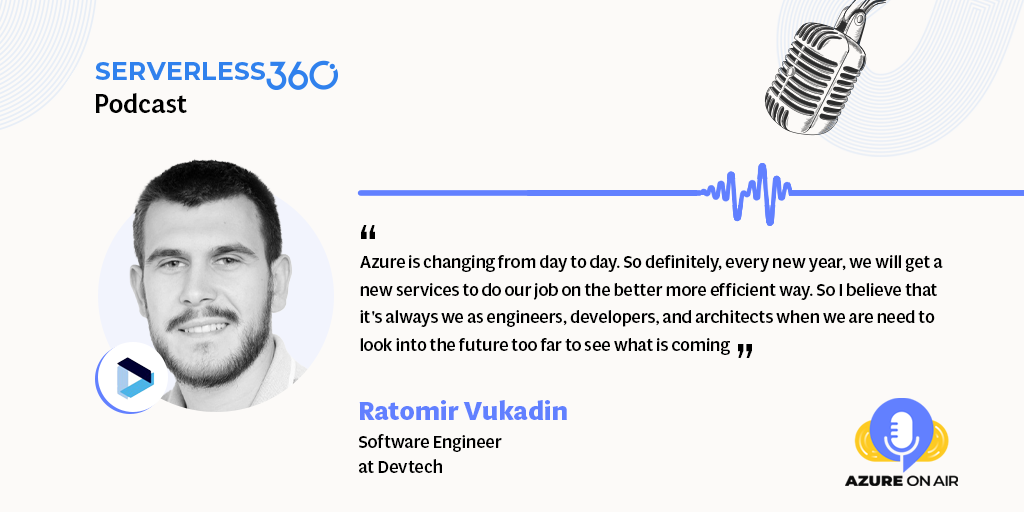Serverless Data Integration
About the speaker
Ratomir Vukadin is a highly experienced software engineer at Dev Tech. With years of hands-on experience in the software industry, he has garnered a reputation for his exceptional project delivery skills, particularly in tackling intricate challenges. Beyond his professional achievements, Ratomir is dedicated to community engagement, showcasing his commitment as a dynamic speaker.
Serverless data integration
Data is the fuel in today’s world. Transferring this data to cloud services, especially in Azure, presents challenges. On-premises environments come with complexities, but top cloud providers offer tools to harness valuable datasets. With variables like data volume and update frequency in play, the solution lies in serverless technology. Serverless data integration provides a tailored approach, offering both flexibility and efficiency.
Limitations with Azure Functions in Data Integration
Azure Functions, integral to Azure’s serverless offerings, come with certain limitations, notably around execution time and memory management. Users should be conscious of these constraints, especially when processing large or unpredictable data volumes. A pragmatic approach is to split extensive datasets into smaller chunks to fit within Azure’s time and memory bounds, ensuring efficient processing. Breaking data into segments, saving intermittently to Azure storage or a database, and then progressing to the next step can help navigate these challenges and maintain system efficiency.
The benefits of hybrid approach to Data Integration
- Phased Migration: Allows for a gradual transition, moving data step by step from on-premises to the cloud.
- Future Preparedness: Provides an opportunity to integrate new data directly into the cloud while planning a complete migration.
- Secure and Stable: Azure’s services ensure private, secure, and stable connections during the data transfer process.
Real-World Insights on Serverless Data Integration
Drawing from his hands-on experience, Ratomir highlighted a case involving a streaming data application for athletes. This platform, capturing metrics like blood pressure and on-field movements, showcased the strengths of serverless technology. Especially during athletes’ rigorous training schedules, serverless provided on-demand scalability, optimizing resources during peak data times. Even during off-peak moments, the system remained responsive and accessible for occasional staff inquiries.
Azure Adoption in Business Operations
Azure’s landscape is dynamic, with no single solution fitting every challenge. Initial architectures may need revisiting as Azure continually evolves, introducing new tools and services. For professionals, adaptability is key. Anticipating future challenges, recalibrating solutions, and staying updated with Azure’s offerings ensures successful data integration. While the learning curve exists, Azure’s robust and ever-evolving platform instills confidence in its users, signaling a promising path for those looking to integrate it into their businesses.
Decoding the Azure Learning Curve for Beginners
Microsoft provides plenty of documentations and examples on GitHub to ease beginners into Azure. Ratomir’s advice is to start with the basics like Azure Functions. Then, get to know storage options like Azure storage accounts and Cosmos DB. Learn about data movement with Azure storage queue, and finish up by exploring Azure Logic Apps for connecting services. With these steps, diving into Azure becomes straightforward and user-friendly.


